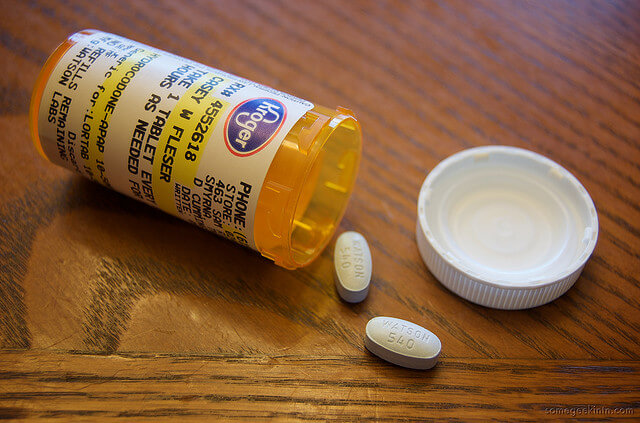 Behavioral concerns in the adolescent population have become more prevalent in recent years. Approximately 1 in every 4 adolescents meets criteria for a mental or behavioral disorder that impairs daily life (Merikangas, et al, 2010). These disorders range from anxiety and social phobias to depression and suicidal ideation.
Behavioral concerns in the adolescent population have become more prevalent in recent years. Approximately 1 in every 4 adolescents meets criteria for a mental or behavioral disorder that impairs daily life (Merikangas, et al, 2010). These disorders range from anxiety and social phobias to depression and suicidal ideation.
The numbers are actually quite staggering, right?
As we know, these young adolescents eventually turn into 18-year-old young men and women who are now required to make life decisions, cut the cord, and fly the coop. Those who are burdened with behavioral and mental disorders have a much harder time staying focused and motivated as they take those steps to independence.
So what seems to be the problem?
The problem is this…adolescents and young adults are struggling with mental and behavioral issues, and most medical professionals are looking toward medication for the answer. While some medications do help, it is often only a temporary fix. I believe lasting change will come as we look down at our plates.
Often the problem lies in what we eat, or what we do not eat on a regular basis. We do not eat enough clean, whole foods grown organically without chemicals or antibiotics. We do not eat foods grown in nutrient-rich soil that provide our bodies with essential vitamins and minerals. And we do not take in enough water to help our cells function properly.
Since the beginning, food has equated to life. Without the proper nutrient breakdown, our bodies fail to function appropriately. Every disease or disorder can be linked to a “glitch” in the human body. Sometimes the glitch can be hereditary or even our own doing by what we eat. When we eat highly processed food with little nutritional value, we are subjecting our bodies to disease and instability.
For example, Attention Deficit Hyperactivity Disorder (ADHD) has been linked to numerous nutritional imbalances— food sensitivities, food allergies, low levels of maternal thyroid hormone, low intake of B6, B1, Omega 3 & 6 fatty acids, magnesium, and zinc, exposure to excessive antibiotics, poor blood sugar control, and too many additives and colorings in our food (TePas, 2006). These deficiencies can almost all be contributed to the lack of whole foods in our current diet. Endless dollar menus, cheap processed foods, way too many fast-food commercials, and the grocery store marketing traps don’t help young adults, or anyone for that matter make healthy decisions.
In another study, published in 2012, Norwegian adolescents who regularly ate a nutritious breakfast were at a lower risk for having behavioral problems. And, just as we would anticipate, those who ate lots of sugar and soft drinks had more behavioral problems (Overby & Hoigaard, 2012). So what can we do?
Start Healthy Habits
One great way to interrupt the cycle of behavior problems is to change our habits in the kitchen. One healthy choice at a time can make all the difference. Start by drinking half your body weight (in ounces) of water per day. Next, work toward more homemade meals and less dollar menus. After the habit of cooking at home takes root, start to become more aware of WHAT you are cooking. Try to incorporate a “Meatless Monday” and get a double serving of vegetables. Experiment with new healthy foods like kale, swiss chard, quinoa, avocado, and chia seeds.
One last (but important) step is learning to curb the sweet tooth. Use natural honey or pure maple syrup as a sweetener to avoid the added sweet stuff. Read food labels and become more aware of the many foods with hidden sugars such as glucose, sucrose, fructose, lactose, maltose and dextrose… pretty much anything with an “ose” at the end.
As parents, it is our responsibility to put healthy food on the table for our children. Becoming more aware of what is on the end of our forks will go a long way in controlling and preventing behavioral disorders.
References
Merikangas, K., He, J., Burstein, M., et al. (2010). Lifetime prevalence of mental disorders in US adolescents: Results from the national comorbidity study- adolescent supplement (NCS-A). Journal of the American Academy of Child and Adolescent Psychiatry, 49(10), 980-989.
Overby, N., & Hoiggaard, R. (2012). Diet and behavioral problems at school in norwegian adolescents. Food and Nutrition Research, 56 (10), 3402. Retrieved from www.ncbi.nlm.nih.gov/pmc/articles/PMC3387363/
TePas, T. (2006). Nutrition and children’s behavior problems. American Nutrition Association Nutrition Digest, 37(2). Retrieved from www.americannutritionassociation.org/newsletter/nutrition-childrens- behavior-problems.
Additional pages you may be interested in:
Failure to Launch Programs – Are all created equally? What you should know > Click Here
10 Reasons why Forte Strong is a Notch ABOVE all other Failure to Launch Programs > Click Here
Failure to Launch Program Curriculum > Click Here
Meet Nick, Mike, Danny and others that have experienced Forte Strong’s Failure to Launch Program > Click Here
You’ve got questions, we have answers in our Frequently Asked Questions page (FAQ) > Click Here
If you can not find the information you are looking for please use the following form to contact us:
[jumplead_form id=”5527d4b17832f8ff118b4567″]


